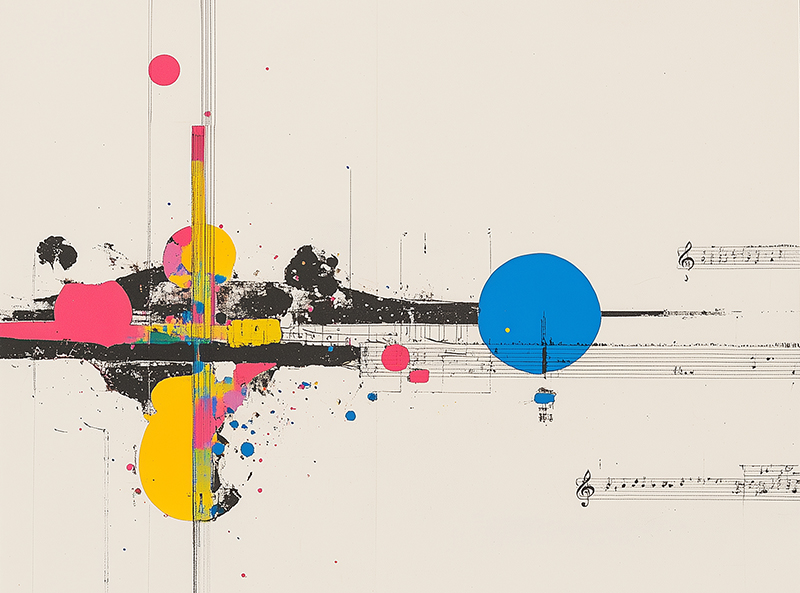
In July 2019 Modulisme was born, Bana Haffar and I contributing the very first 2 Sessions. It was very important that my first guest be a woman, and I’d so much like more Ladies to respond to my invitations, for Modulisme to offer more of a female presence… And fully document our Electronic Music community…
Over the years, I’ve heard it said that the platform offers so much information that the newcomer doesn’t know how to take it in, where to start, that there’s too much to read… A simple reply would be « take your time » because Modulisme wants to share information, give composers a voice and make sure they have the opportunity to be well presented. The fuller their message, the better off I am, so here it’s all about transmission, and of course it may take time to digest… For the better !!!
We are celebrating 5 years of activism and offering more than 1 000 exclusive works showcasing the importance of analog electronic music !
For this series I wanted to emphasize the alliance of acoustic and electronic with a collection of works showing that Modulisme isn’t dealing with Modular synthesis only and that what matters is the composition rather than the tools.
ACOUSTRONIQUE features music composed of sounds artificially created using the modular instrument, enriched with natural sounds (field recordings/voices) or acoustic material (instruments).
This is volume 1 which I chose to limit to 2 hours so as to keep it digest…

01. Philippe Petit – Acoustronic (15:05)
French musical-activist who signs his records on multiple international labels, has played hundreds of dates around the world + has recorded with an amazing dream-team of personalities and solo…
For me, it was important to start this series with a rather long title, as a way of inviting the listener to sit back, take their time and not rush through the listening. Firstly, it reflects my commitment to fighting against the society around me that exploits individuals, forcing them to do ever more tasks and make ever greater efforts in order to subsist or simply get on with their lives. Thinking of the Japanese concept of Ma which has been described as « a pause in time, an interval or emptiness in space. Ma is the time and space life needs to breath, to feel and connect. If we have no time, if our space is restricted, we cannot grow. This universal principle applies to every aspect of life ».
My way of asking you to spend a moment with me, relaxed, and above all in the hope that everyone will repeat such gesture on a daily basis.
From my early works such as “Off To Titan” re-contextualizing Mahler’s first symphony, “Cordophony” giving priority to sounds coming from the vibrations of one or several strings, or “The Extraordinary Tales Of A Lemon Girl” and “A Reassuring Elsewhere” trilogies, I have always been showing extreme respect to the acoustic, keeping it fresh, accentuating the relief and depth of the noble sound-material.
For me it is crucial to maintain a policy of performing everything myself and therefore choose which instruments to use. Just as a classical composer would write for such and such group of instruments, knowing that their timbres would complement each other, I want to think of associations that work for me, to my ear, and thus give my music a personal character.
In this “Acoustronicism” you can hear Tape manipulations, Percussions, prepared Piano-Soundboard and then Electric Psalterion meeting Buchla and Serge synthetic spices… and marrying so well, a simple wedding, no need to publish the banns, the protagonists naturally come together and the ceremony takes shape.
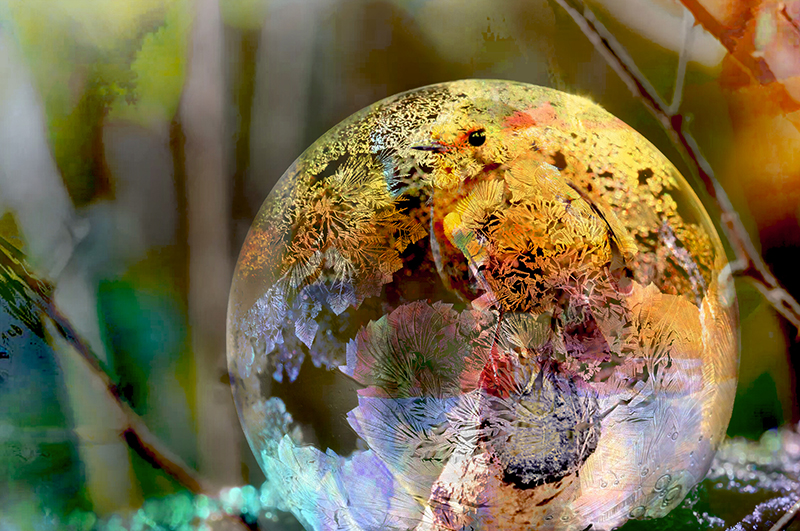
02. Sig Valax – A Feather From Tree (04:56)
Sigolène Valax realizes electroacoustic and radio pieces (ARTE Radio), sound creations for live performance. In her improvisations, she looks for frictions, tensions and energies.
She practices a non-idiomatic music that relies on organic drones.
Since 2016 she creates – with the trio Vierge Noire – the music for the choreographer Anna Gaïotti, and is interested in wild lutheries and explores experimental improvised music with Vierge Noire, Elek Ember, Seuil Optique, Sauges, Mesce Basse, and Lucus Furrina.
The story of “A Feather from Tree” reflects a poetic and introspective journey, marked by my deep connection with nature. This piece seeks to embody a paradoxical inversion: a rooted feather and a floating, light tree, thus subverting our usual perception of sound.
To make this idea of sound tangible, I have integrated acoustic materials such as birdsong, those natural voices that rise directly from the environment. This intimate link between living nature and modular electronic sounds creates a tension where the organic world dialogues with singing machines: Music Easel, MS20, Persephone, Quadrantid.
The electronics add synthetic sound layers and modulations that amplify and transform natural elements. Through the integration of electronic and acoustic sounds, I seek to irrigate the boundaries between the organic and the synthetic, creating a soundscape where each component – whether natural or artificial – resonates with the other. This fusion explores a subtly reversible dynamic, where each world nurtures the other in a panicked harmony.
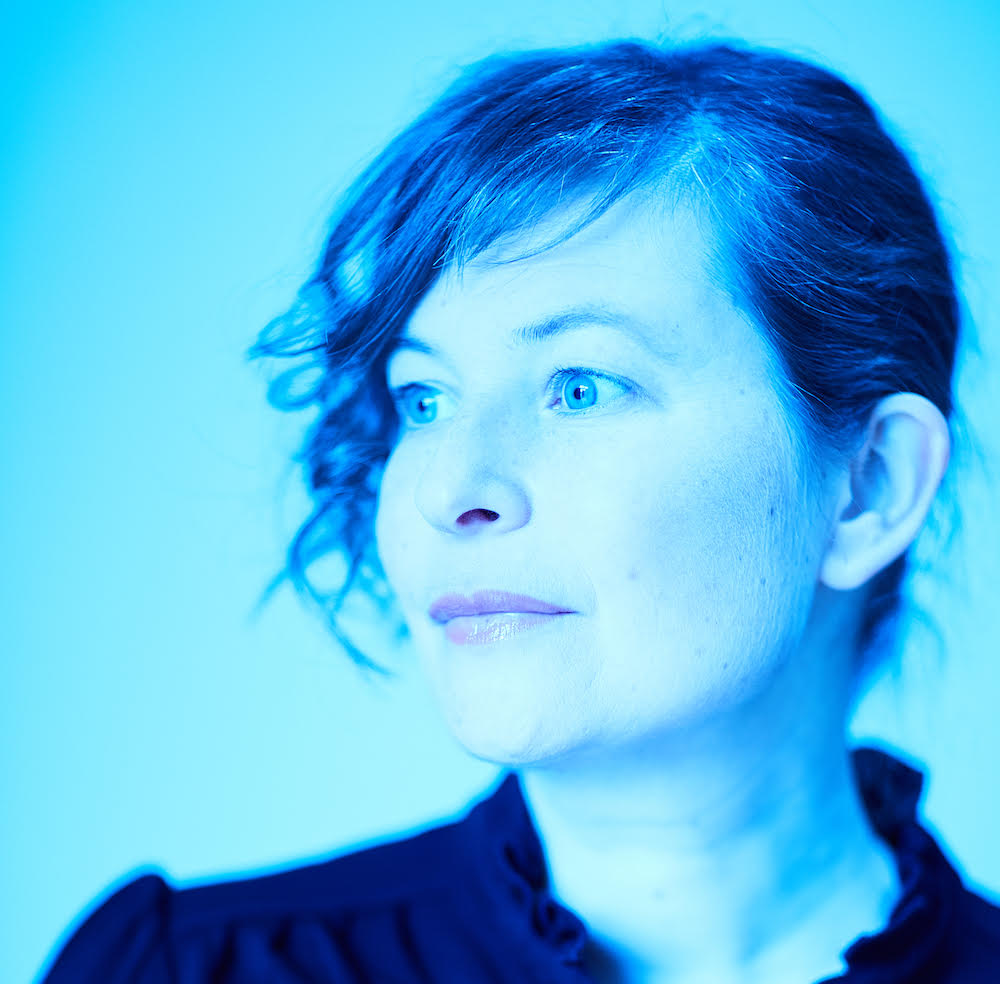
03. Jobina Tinnemans – Mono-ene (08:47)
Jobina Tinnemans is a composer at the nexus of classical and electronic music, employing conventional, cross-discipline and virtual forces. After living and working in her native country, the Netherlands, and in London, she moved to a remote headland in Wales to concentrate on making music. This landscape dominated by the rhythms of the sea and the weather has become a major influence since. Trained as a classical pianist Jobina started writing electronic music in 1993 while studying in Eindhoven, Philips Electronics town, in a decade where she was able to fish analogue gear out of skips which was rendered redundant by the approaching digital era, offering opportunities to experiment with electronic music. Currently Tinnemans works in contemporary classical genres, as well as in experimental electronics.
Mono-ene is a soundscape on atomic level, a single bond in which two electron pairs are shared between two carbon atoms: the electronic soundworld shared with wooden string instrument particles.
I’ve used a Korg MS-20, extended techniques on violin and cello, and my NAIENI, which is a custom-build modular interface, with the self-made face cream ‘vanity’ shakers attached to play my self-made virtual instruments. This is a set up I have been using frequently, lately. The different ways you physically interact with these machines compliment one another beautifully.
You can be different members of the same ensemble, so to speak, each with their own characteristics, and surprise yourself.
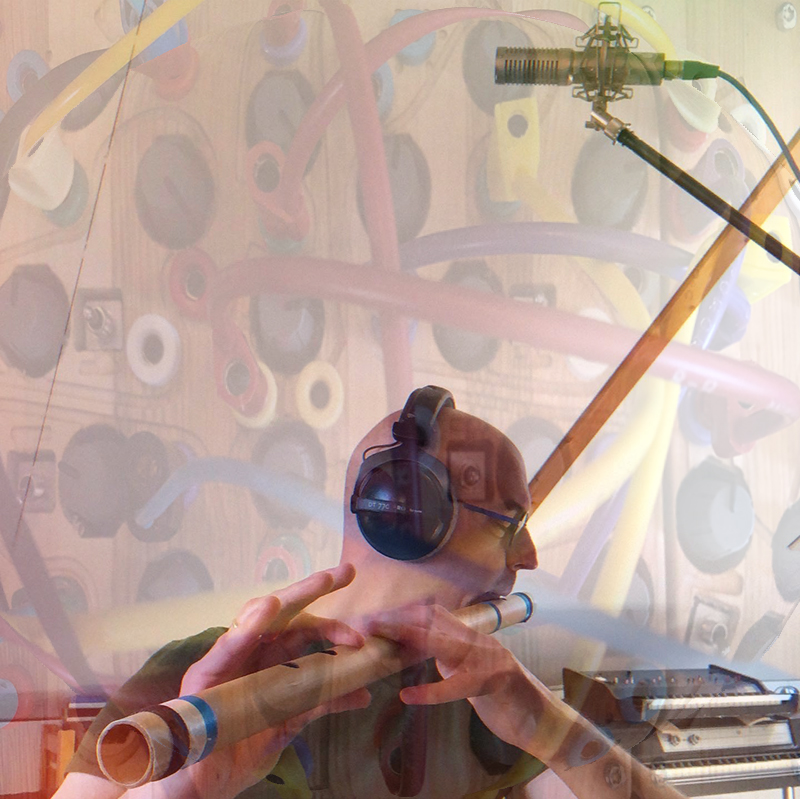
04. Raoul van Herpen – Organic Lungs (04:05)
Raoul Van Herpen is an electro-acoustic music composer and improvising musician from the Netherlands.
I got into playing flutes, sax, clarinet only for the last year or so, so thats kind of new to me. As in all instruments I love to improvise and I’m working hard to make that happen. It is also very satisfying and useful to add these instruments to the sound-palette in making and recording my compositions. When it comes to electronic, I like to play with the instruments that are not behaving as expected but can be forced to or played with to be able to respond on the spot. Or use it to enhance and/or process sound with.
In this piece I chose to use 3 notes (more or less).
For every note that is played, the same amount of pause should follow by the instrument that played. With seven different ‘voices’ it is full of sound that waves in and out.
I like that it’s very fragile and it is exciting to hear the pitches beating against each other when they’re not perfectly in tune.
There are three Tocante voices. Each voice with its own pitch. The Tocante is a DIY touch instrument from Ciat Lonbarde, when touching the pad’s you play a note.
Next to that there are two instances of Bansuri flute (bamboo side-flute from India) and two instances of western (side) flute.
Lately I have been very inspired by the flute and I really like the hands-on, humanly feel of it, the Tocante feels and reacts very naturally by touching the pads this makes it a lively and rather organic combination. Speaking about organic, the piece kind of sound like a big church organ to me, lovely!
All sound, acoustic or electronic should sound lively to me. In electronics I like to hear the “raw electrons” and feel the force and dynamics that would be natural with an acoustic instrument. Sometimes bringing acoustics sounding closer to electronics or the other way around (like in this piece) also help to blend in more easily. In the mixing and editing stage I try to make it all blend by treating it all as acoustics, thus sounding like individual instruments playing together in a real place.
Over all I just really enjoy the combination of the two.

05. Överklassen – Svanen (02:52)
Trumpet: H. Strandhag
Buchla and Beads: M. Eriksson
Mastered by J.F. Brännström in Min vilja är folkets studio
Martin Eriksson is an Architect working in many fields. He is connected to Elektronmusikstudion in Stockholm, EMS.
Håkan Strandhag is a film producer living in Gothenburg and playing with many different bands. Perhaps most notable with Refused for some time in the nineties.
Me and Håkan have been playing together since we were kids. We have been doing Överklassen since 2016. The core is modular and trumpet but we often add bass and other acoustics. We always start with modular noodling and put the trumpet over it, like a wet blanket or perhaps like a cherry on the top.
The idea is to sculpt, sift or crystallize out traditional music out of the randomness of the modular. To emboss or to get hold of something. Dig out something. Cut something clean. The first idea comes from below but the second from above. Looking at it safe behind upper class curtains. Forcing trumpet blasts on the muddy modular mess.
Lately we have noticed a ”change in the force”. It took so long to get where we wanted to be so we had to make some changes. This is therefore the Swan song of Överklassen. It is called Svanen.
In this piece we use a smaller Buchla system (259, 296, 281, 292, 257, 266 and 218). There is also a trumpet that is processed by three Mutable Instruments Beads and run through the Memory, man. The Beads are freezing tones from the trumpet in a way that remind me of the mellotron-choir used in the 10cc song ”I’m not in Love” or the mixer choir of Billy Joel ”I Love You just the Way You are”.

06. Schema Musicalis (Stelios Giannoulakis) – Interpliable (06:17)
Stelios Giannoulakis is a composer, sound designer, performer, improvising multi-instrumentalist, engineer, creative music technology researcher and educator. Specialized in Electroacoustic music composition, soundscape recording, music and sound design for theatre, radio, concert, video, dance, video games.
He is teaching music technology and composition at CMRC – Athens Conservatory + a founding member of HELMCA (Hellenic Electroacoustic Music Composers Association).
A study on malleable audio composition, using samples from the recorded piece Interplay by RSLG Quartet (Vassilis Roupas: piano, Giannis Leloudas: drums, Panayiotis Raptis: sax, Stelios Giannoulakis: electronics).
I used real-time stretching, transposition, and stereo-imaging processes to create sound material through multiple generations.
This was subsequently mixed and edited as an abstract piece for diffusion, that combines improvisation techniques for musical phrasing in a small time scale and Acousmatic composition editing techniques for large-scale structure.

07. Sion Orgon – Hope (07:00)
Brass percussion, rubbed cymbals, Tibetan bowls & bells, Treated Piano frame recorded using contact mic, Looped Electric Guitar, Voice, Modular System, Waldorf Microwave, AKAI Sampler, Acoustic Drums
Sion Orgon, a versatile creative force hailing from Cardiff – Wales, is a renowned experimental musician, composer, singer, and songwriter with a professional background in avant-garde artistry. With a notable presence in the field of experimental electroacoustic music, sound design, audio mastering, and production, Sion’s influence extends across various musical realms. Boasting an impressive discography of six solo studio albums and a rich tapestry of collaborative works, Sion has worked along side with artists like Coil, Can’s Damo Suzuki, Alien Sex Fiend, Jesus Jones, William D Drake(Cardiacs), Alternative TV, Sleaford Mods, Hunting Lodge, The Waterboys, Splintered, Philippe Petit and the band Faust.
Alongside his musical endeavours, Sion’s adeptness in sound design has garnered acclaim in the realms of BBC Television/Radio, independent film, contemporary dance, theatre, animation and more, solidifying his status as a multifaceted artist.
As always with most of the pieces that I create, I try to turn chaos into order. For me, creating electroacoustic music is like tapping into my natural musical state. It’s a process that allows me to blend the digital and organic elements, crafting a unique soundscape that sometimes captures the essence of my creative vision. Through meticulous experimentation and fine-tuning, I strive to shape sonic textures that resonate with emotions and evoke responses in the listener.
I follow a specific technique where I mute all previous takes and record blind, so the previous recordings do not consciously influence the next.
I am always looking for new ways to push the boundaries and explore different sounds. In this particular piece I was using a kick drum trigger from my acoustic drum kit to trigger sounds from the Waldorf Microwave and the Sampler again sending those sounds in Audiomulch through various effects and processors.
After recording the raw improvisations, I move on to the editing process. I judiciously go through each track, cutting out any unnecessary parts and arranging the pieces to create a coherent narrative. I also add my voice as an embellishment to enhance some of the dynamic moments and bring a human connection to the music.
For treatments, I use various tools and effects to shape the sound of the music. I utilise Audiomulch to granulise and pitch some of the modular parts, as well as experimenting with Mutable Instruments Clouds and the Benjolin v2’s filter being modulated by Mutable Instruments Marbles. I also sent tracks out through my Marshall Amps, recording the sound back in with a stereo Mic setup and hardware reverb like a Lexicon PCM 80 or even my Make Noise ErbeVerb to add depth, space, movement and texture to the sound.
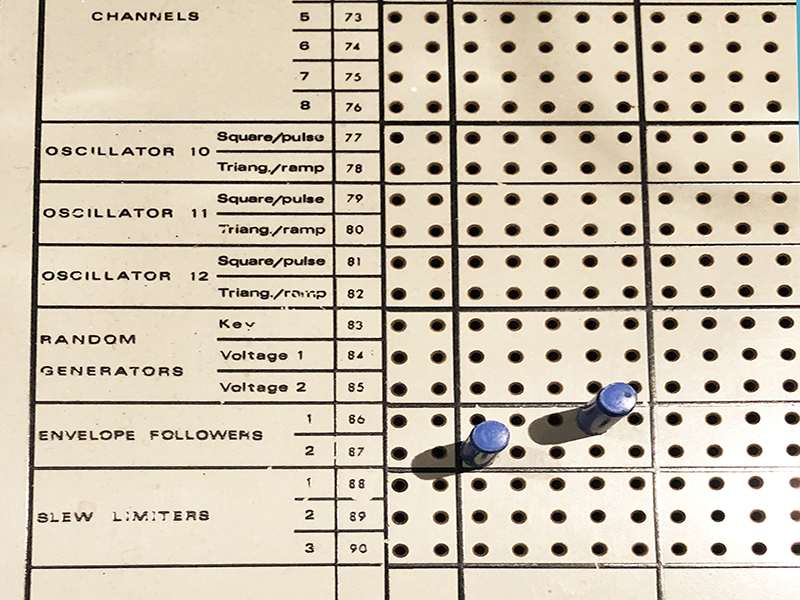
08. Jack Dangers – SkizSo0n (06:35)
It’s now been 30+ years that Jack Dangers is an essential figure in modern Electronic music. At the end of the 80s, he originated Meat Beat Manifesto and started to create a universe and a new sound, made up of breaks, psychedelia strewn with samples, in an industrial, dub and hip hop fusion…
Inhabiting San Francisco, Jack has played a central role in the explosion of genres such as big beat, trip hop, breakbeat and dubstep and has collaborated with David Bowie, Depeche Mode, Nine Inch Nails, The Orb, Public Enemy, David Byrne, DJ Shadow, Aphex Twin while releasing solo works and playing his vintage synths…
The field recordings which are sometimes clear, and after treatments sometimes not, were recorded during the COVID 19 lockdown when people would release their frustrations by going outside and screaming (they did this where i lived anyway!).
Much like the intro poem the recordings were fed through the Synthi 100 with the envelope followers triggering various components reacting to loud and quiet parts of the speech patterns. Some of the material was also sent through an EMS vocoder 3000 to produce vocal effects and an extra layer of dimension in the stereo field.
I embellished this with the Moog and Arp 2500 modular systems and some classic Musique Concrete tape manipulation techniques. This journey is still evolving and seems to never tire or end….it’s always progressing.
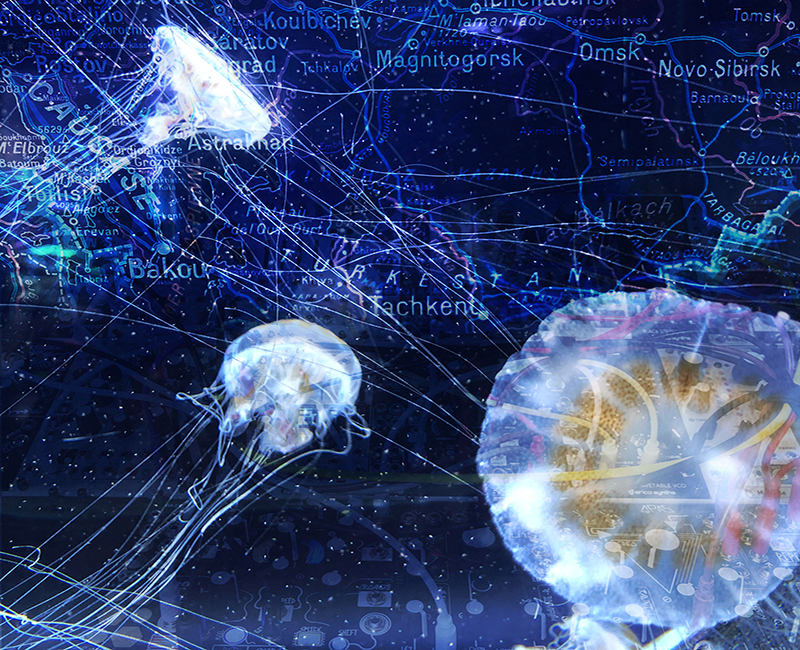
09. Christophe Modica – Standing On The Earth (09:39)
Christophe is a “sound-maker” who has been working in France for many years. Working in street performance, creating soundtracks for dance and theater, and preoccupied by what’s alive, deeply human and committed, he’s a great friend of mine.
Composed at a time when France is in the midst of political and xenophobic chaos, I wanted to tell a story of the links and threads that weave their way across the world between different languages, different places, different landscapes, different sounds. It’s a joyful story of movement towards a common elsewhere. This composition takes its meaning from the coming together of all its singularities, and aims to show that diversity enables us to move forward in the face of adversity.
I chose my Make Noise’s Morphagene, to manipulates acoustic samples of various materials, playing a granular effect that works from the sound produced by the rubbing together of two dried thistle flowers. In parallel I used two stereo filters and Make Noise’s Mimeophon, which serves as both complex delay and VCO. Then I played with phonographic recordings made in France, Denmark, Norway, Turkey, Croatia and Belgium which became part of the composition and used as an additional sound source whose particularity is of being identifiable and referencing a common sound culture.
I love the combination of acoustic and electronic sound. I’m fascinated by the complexity of sound they reveal when combined, and the richness that emerges from their differences. This is a logical extension of my political commitments.
What’s more, this system is extremely playable and fun. It allows me to make music with my body rather than my head.
Virtually everything is produced live. I think up a piece, choose the acoustic materials and sounds, look for the broad outlines, then play, replay, refine, play and replay again. Then I record on multitrack, and finally, I do a few touch-ups and a bit of mixing on mixing software. I always try to produce pieces that I can play live in concert.
When I choose to combine acoustics and electronics, I give priority to their harmonic or dynamic relationships, paying attention to the sound materials, their grains and what they produce together. I don’t differentiate between electronic and acoustic sounds, It’s the complexity of their associations and mutual interactions that interests me. Of course, phonographic sounds also have a narrative value and are strongly identifiable and allow narration in my music.
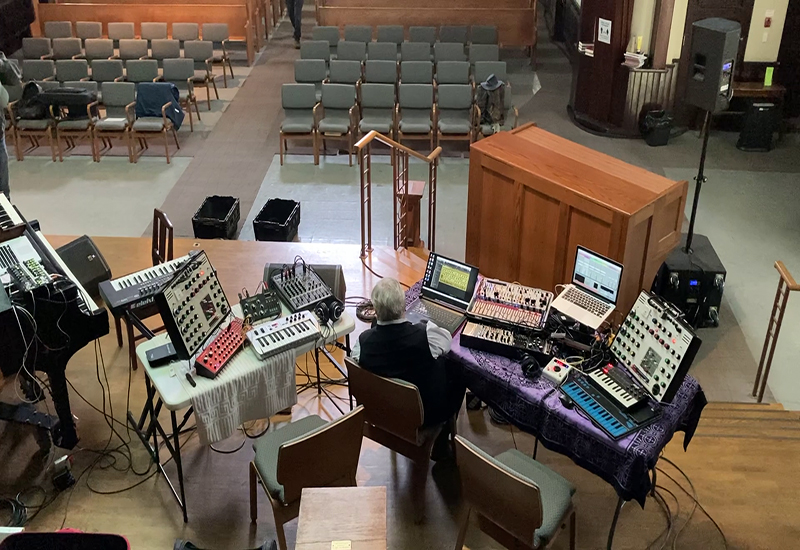
10. Canadian Electronic Ensemble – Ceelectric Singing (14:17)
The Canadian Electronic Ensemble was founded in 1971. It is the oldest continuous live-electronic group in the world.
The CEE first toured Canada in 1975. Their first European tour was in 1979. In the years since, the group has toured extensively throughout North America and Europe. Beginning in 1974 the CEE has presented Toronto concerts that have become a major venue for new electroacoustic works by artists from every province in Canada, as well as international artists from Argentina, Australia, Austria, Belgium, Denmark, England, France, Italy, Japan, Mexico, New Zealand, Norway, Sweden, and the United States.
More than fifty years later, the CEE is still at the forefront of live electronic music. Using old (and new) analog instruments, laptop computers, standard instruments, found sound, field recordings, and in fact anything electronic, they continue to cut a sonic swath through the ears of the world.
CEE members agreed to create an electroacoustic composition that would be composed collectively, track-by-track.
Paul Stillwell had a compositional structure in mind that would feature a Kaval and he and David Sutherland improvised together to create the bed track which was subsequently edited and overdubs applied.
David Jaeger added the to bed track with material from himself as well as material that was shared by Jim Montgomery and Rose Bolton.
John Kameel Farah, a busy touring musician, could not contribute, but he invited the remaining band members to select from his previously submitted tracks from the earlier project. Once all the elements were assembled, David Sutherland created a final structure, in consultation with other CEE members.
The instruments included Eurorack modules, vintage analogue synthesizers (such as the EMS Synthi A and Synthi AKS), Reaktor 6 softsynths, acoustic and processed violin, and human singing voices.
In the tradition of the CEE, every sound, whether acoustic or electronic, analogue or digital, represents a valid sound source that can serve a musical role in collective creation. All of the sound sources chosen for a CEE project are handled with utmost care, properly balanced into the mix, and mastered artistically in a way that preserves the intent of the creators.

11. Antonio Russek – Universos Paralelos (13:24)
Antonio Raúl Russek Martínez is a Mexican composer of electroacoustic music and considered a pioneer of sound art in Mexico.
In 1973, he moved to Mexico City and started to compose music for plays + began the construction of ‘musical objects’, motivated by the desire to unite the sound and the visual. In 1974 Russek set up his personal electroacoustic music studio in the Condesa neighbourhood, becoming the first of its kind in Mexico. He founded the Centro Independiente de Investigación Musical y Multimedia (CIIMM) in 1978 and there he carried out musical production, sound settings for exhibitions, recording, as well as publications, editorial and academic work.
“Universos Paralelos” was composed for a festival in Canada and later presented in Austria in venues with the 22.2 channel format. Made with mixed electroacoustic techniques, it is a metaphor of two parallel universes that collide.
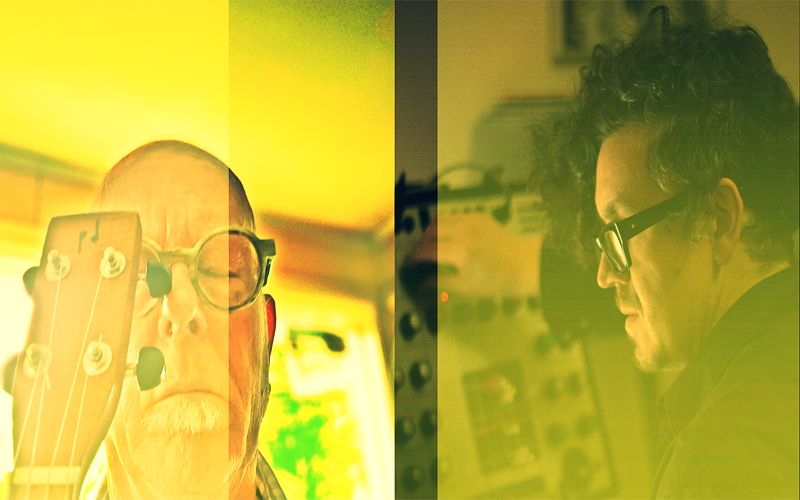
12. Bush Fashion (Dave Brown & Mat Watson) – B (08:36)
Bush Fashion is an improvisational duo made up of Dave Brown (Pateras/Baxter/Brown, Candlesnuffer, Bucketrider, Brown.Buck.Mayas) & Mat Watson (Solar Cells, ULMD, Taipan Tiger Girls). The seed of Bush Fashion grew from their infrequent collaboration over the past decade in Melbourne’s experimental music scene. Bush Fashion explores non-conformist, collaborative musical language utilising a treated hollow body guitar and matrix programmable portable modular system. Their performances are a wash of nuanced alien language, call and response, and entangled human energy, revealing new realities to the listener.
Our collaborations have usually consisted of treated guitar and Synthi Aks.
These pieces were recorded in one pass a few months ago using a semi-acoustic Gibson ES135 electric guitar in conjunction with a range of the Gamechanger brand guitar pedals and an Erica Syntrx.
We approach our recordings the same way we approach a live performance: no talking, just listen, respond and explore.
Though there is some tonal content and fretting, Dave Brown uses the electric guitar as more of a tone generator and then play the stomp boxes.
Mat Watson only works with electronic sources but loves the sense he gets from hearing strings resonating and membranes vibrating in the room.
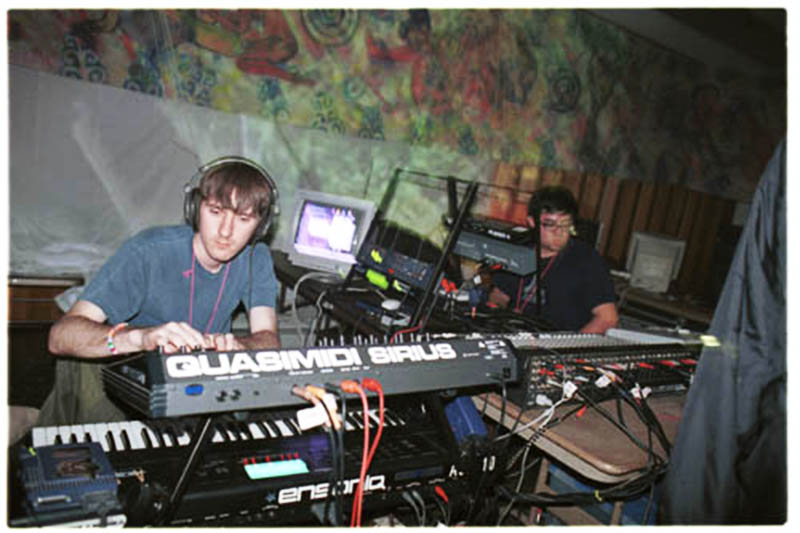
13. Twine (Chad Mossholder & Greg Malcolm) – Two (05:52)
Cleveland, Ohio’s Greg Malcolm and Boulder, Colorado’s Chad Mossholder comprise a unique musical entity.
Twine was the culmination of their extended history, which included their acclaimed 2002 LP Recorder for France’s Bip-Hop and their distinguished catalogue Ghostly International and Hefty Records…
Their music contains a mysterious and unresolved quality, the result of the musical relationship which the group’s two main practitioners share. Making music together from across the country, their collaborations were exercises in postmodern abstraction.
As much a noisy, ambient experience as any heard today, from Fennesz’s Endless Summer to Black Dice’s Beaches and Canyons, Twine also draws a story of the fuzzy lines that connect and distance humanity, and the spiritual in-between that emerges in the nighttime hours.
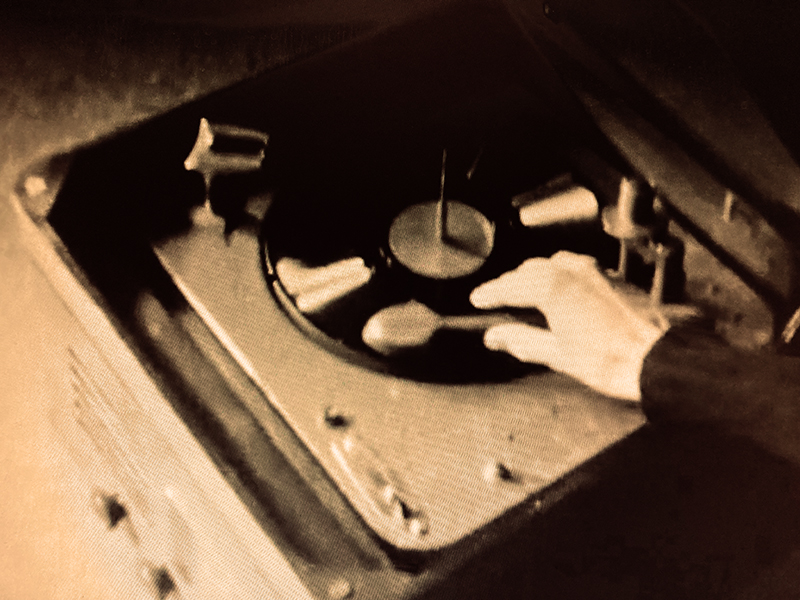
14. Bester / Marsan / Victor – Meshes of the Afternoon (13:46)
Maelle Marsan, Gabin Victor Joseph and Samuel Bester study electroacoustic composition at La Cité de la Musique in Marseille for Samuel and at the art school of Aix-en-Provence for Gabin and Maelle.
Maëlle is a musician and dancer who works, through improvisation, around different states of consciousness.
Gabin is a noise-ambient musician, who studies dreaminess and the end of times in his art through music, comics, and performance.
The composition for this film is the result of a seminar on experimental film and sound composition organized by GMEM, national center for musical creation and directed by Javier Elipe Gimeno, teacher at the audivisual departement Satis in Aubagne.
We were struck by the modernity of Maya Deren’s film and its dreamlike treatment.
Within the work, we observed several cycles, like repetitions, sensations of déjà-vu, with – at each iteration – variations and developments. This inspired us to create the sound work with a similar structure, i.e. recurring objects that gradually change.
Each of us took an element of the film, an object or a feeling, and interpreted it in sound.
Once we’d pooled our efforts, we were able to rework it with six hands in the form of strata, like states of consciousness plunging progressively into the depths of a dream.
Each of us having a different sound universe, we used a wide variety of tools, from modular synthesizers to violins, voices, audio processing and direct sound recording, to give this film a musical resonance based on feeling, sensation and dream.
